Merida Silex+ 8000-E review
A gravel bike for riders who want to explore more technical terrain
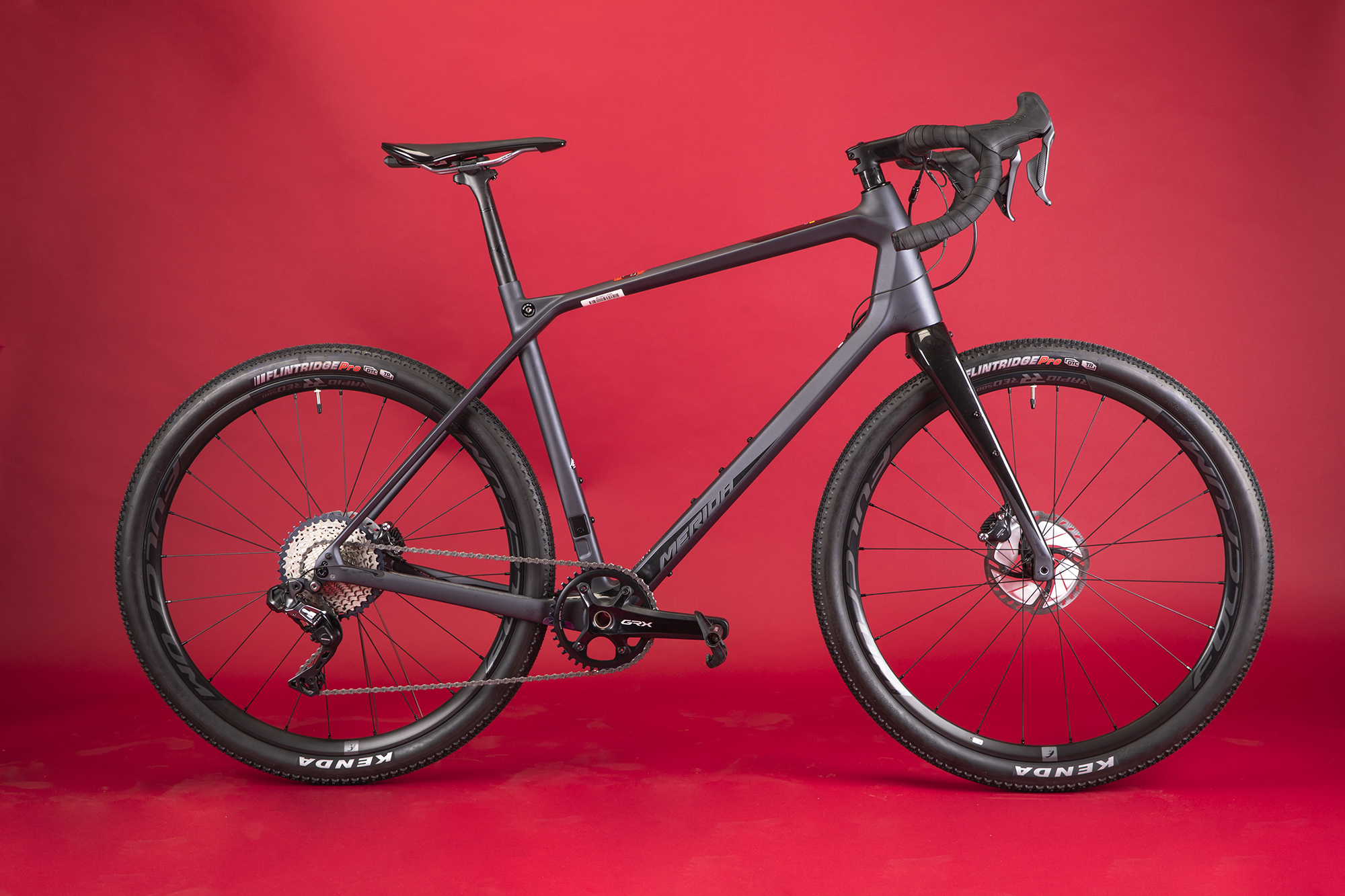
f you are looking for a bike to partner the pursuit of the more technical end of gravel riding then the Merida Silex+ 8000-E might well be a great choice. It does need a couple of judicious spec changes to really bring out its potential but the ride quality and its ability to put a big fat grin on your face when faced with fast 'proper' off-road trails affords it a plenty of forgiveness for imperfections.
-
+
Progressive frame design
-
+
Nimble 650b wheel size
-
+
GRX Di2 performance
-
-
Handlebars offer too much reach
-
-
Rim/tyre combination failed to hold air when set up tubeless
- -
- -
You can trust Cycling Weekly.
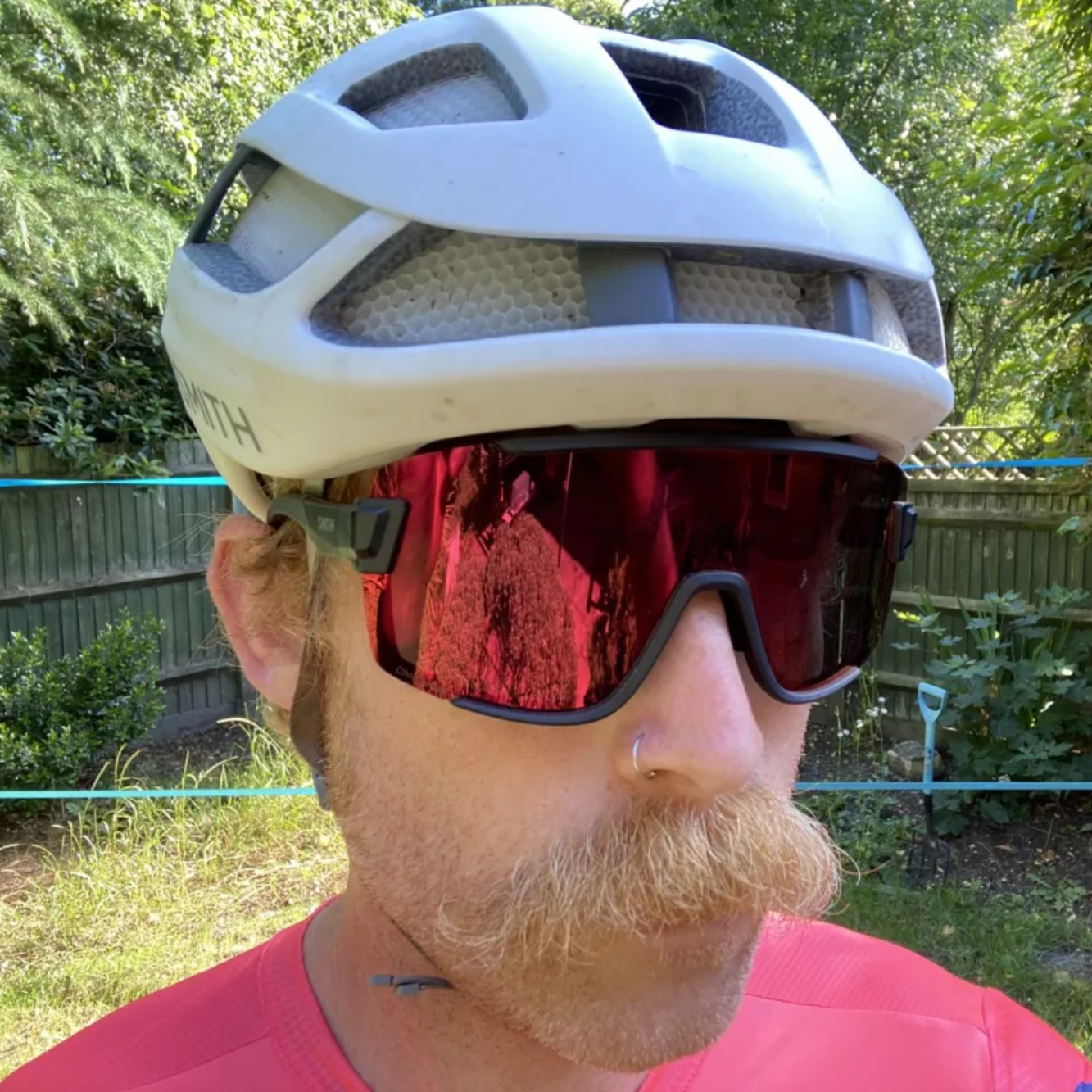
The Merida Silex+ 8000-E model sits at the top of the entire Silex range and features a distinctive carbon fibre frame and fork as well as Shimano's gravel oriented GRX Di2 groupset.
As off-tarmac riding grows in popularity and riders are becoming more adventurous in route choices, demand is rising for a new type of gravel bike: one that is a little more at home in the rough stuff and not just a road bike with bigger tyre clearances.
Merida's vision of this gravel bike on steroids comes in the form of the Silex+. The '+' denotes a switch from the usual 700c wheel size (featured on Merida's more classical mixed-terrain Silex gravel model) to the smaller 650b size popularised within mountain biking, and starting to pervade the gravel world. The smaller wheel offers nimbler handling, a stronger wheel build and the ability to run wider tyres without the need to balloon frame and tyre clearances.
The best adventure and gravel bikes for 2020
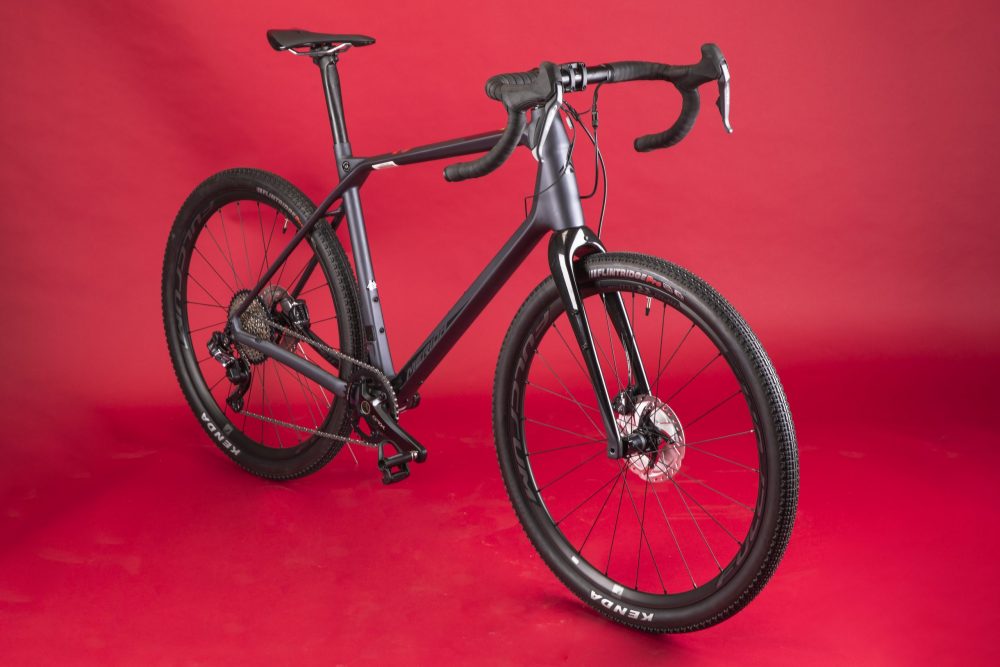
Which is better for your gravel bike, 700c or 650b?
Frame
The carbon frame Merida use as the basis for the Silex+is pretty unmistakable and the design aesthetic splits opinions. Constructed using Merida's proprietary carbon fibre layup, it features a prominent and very tall head tube combined with very angular frame tubing. The result is a frame which looks more purposeful than elegant. The only smooth lines are to be found where necessity dictates, namely the seat tube and to a point on the carbon fork.
Merida has designed the Silex with a more progressive geometry than a typical gravel bike. The head angle is slacker than most at 70.5° (Merida measure 71°), giving it a front end that puts the rider further behind the front wheel and is more akin to measurements found on most conservative XC hardtail mountain bikes.
The steeper 74° seat angle (I measured it at bang on the same) aims at weighting the front wheel, making it better able to tackle steep, technical climbs. The head tube is a monster at 225mm in length (size large, including headset top cap). For comparison a Cannondale Topstone in large only has a head tube of 198mm - even taking out the 5mm headset top cap it shows how tall the Silex+ is at the front. The resulting frame dimensions provide the Silex+ with an ample amount of standover height, as befits a bike whose remit is technical trail riding.
The frame also features a long 1085mm wheelbase despite featuring relatively short 425mm chainstays, thanks to a long front centre measurement. This is also one of the reasons Merida is speccing all frame sizes with an 80mm stem.
The frame has a few extra neat features such as the integrated seatclamp situated inboard of the seat cluster and Merida's patented aluminium 'cooling fins' at the brake mount - although it's difficult to see them being that necessary on a bike such as this.
Integrated cables go through a port in the downtube; the positioning is a little bit of a pain if you want to use a full frame bag. There are also three bottle cage mounts including a multi-position version on the down tube. The only feature that was a little disappointing to see was the press fit BB386 bottom bracket as it can lead to a pretty creaky BB without regular checks.
Components
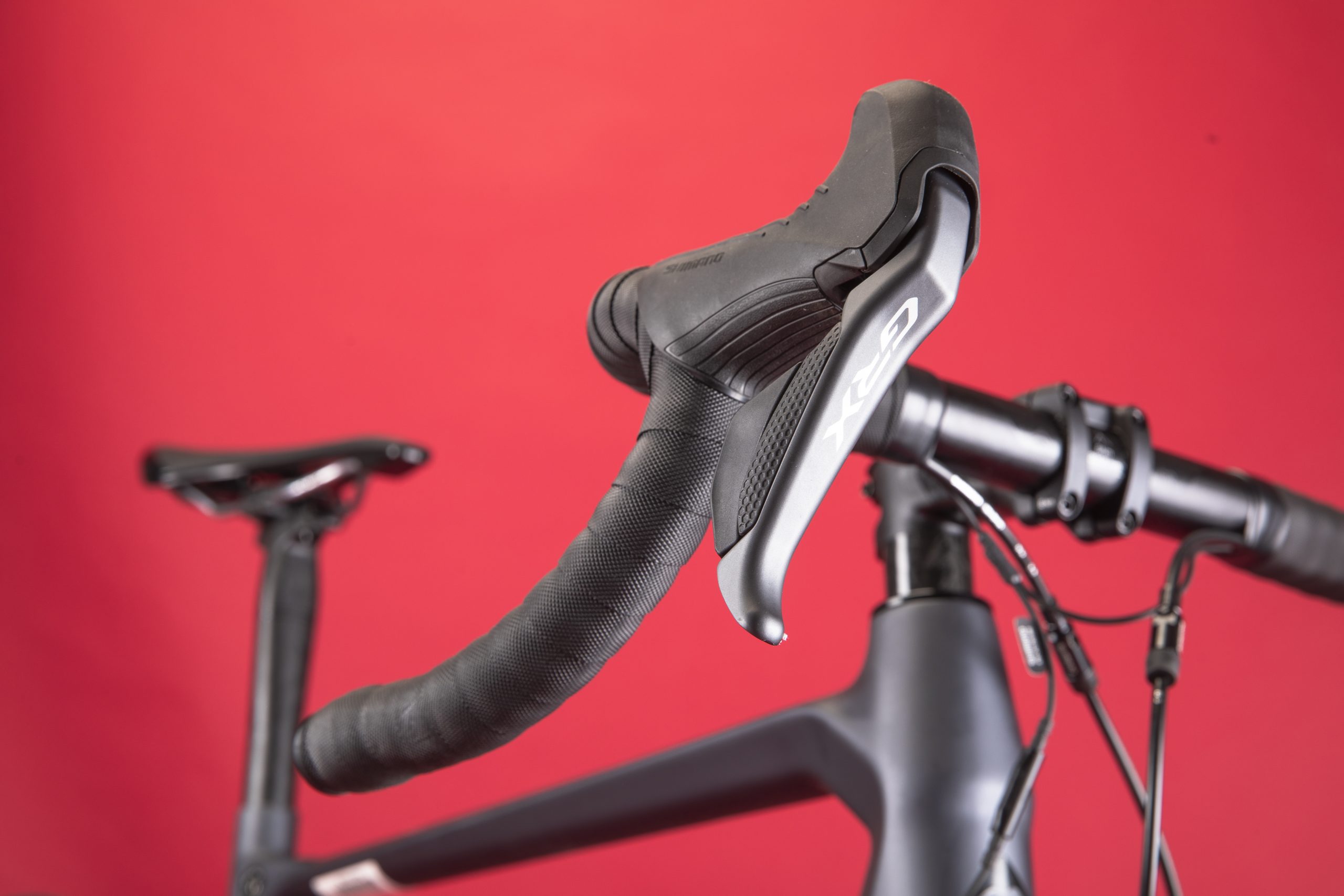
The jewel in the crown of the Silex+ 8000-E spec list has to be Shimano's GRX Di2 electronic groupset. GRX is Shimano's gravel specific drivetrain, taking the best bits of Shimano's on and off-road groupsets and mixing them into an ideal mix of durability, lightweight and optimised gear ratios.
In this 1x 11 speed electronic guise it is quite possibly the best drivetrain I have tested for gravel use. Starting with the levers, these have a unique look and ergonomics that feel perfect when battering down rough and rooty trails. Unlike some other levers they provide enough grip and brake feel on the hoods that you don't need to automatically adopt a weight forward drop position whenever the terrain points down.
Merida has opted for a 40 tooth chainring matched to an 11-42 cassette, providing a set of gear ratios that are ideal for anyone who doesn't have to consider huge climbs as a daily occurrence or doesn't spend every day fully laden with bikepacking kit.
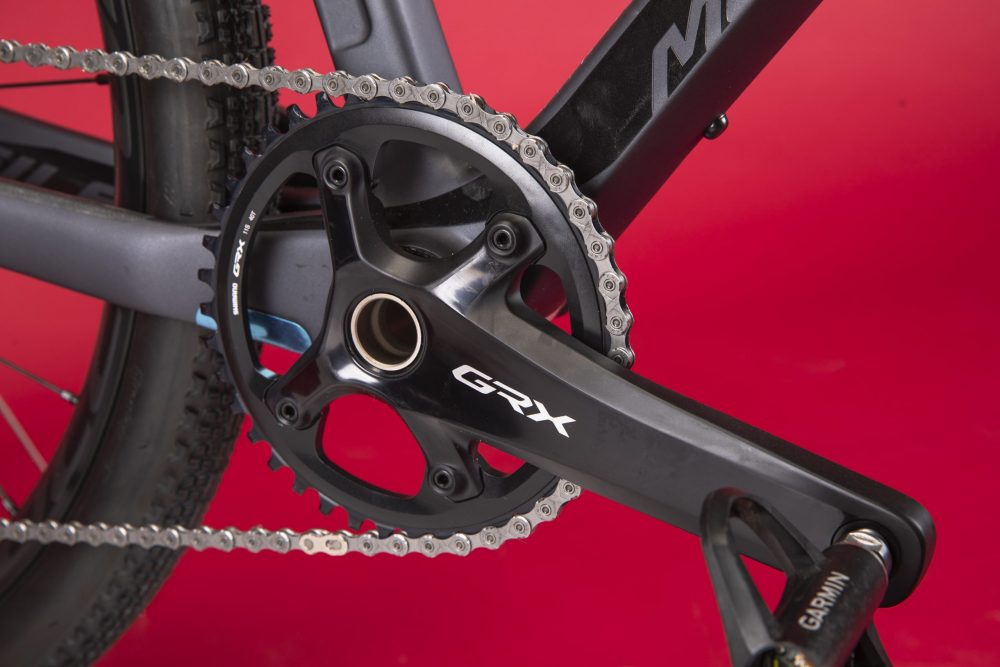
The biggest spec sheet issues on the Silex 8000-E were the wheels, tyres and handlebar.
Starting with the wheels and tyres, on paper there shouldn't be much to complain about. The Fulcrum Rapid Red 500 wheels have an impressive build quality and remained true throughout testing, the hubs spin for days and the overall look fits in well with the 8000-E's stealth bomber aesthetics. The same goes for the Kenda Flintridge tyres - even though I haven't had a massive amount of experience with these tyres before I was impressed with how well they rolled.
However problems arose when trying to set them up tubeless. Despite my best efforts, the combination simply refuses to hold a decent pressure for more than a few minutes. I added way more sealant than required in order to try and limit air loss but it looks to be a combination of a very baggy fit - the tyres are easily fitted and removed with little thumb strength required - and a leaky seam in the aluminium rim. For effective tubeless use either one or the other would need to be changed to provide reliable performance.
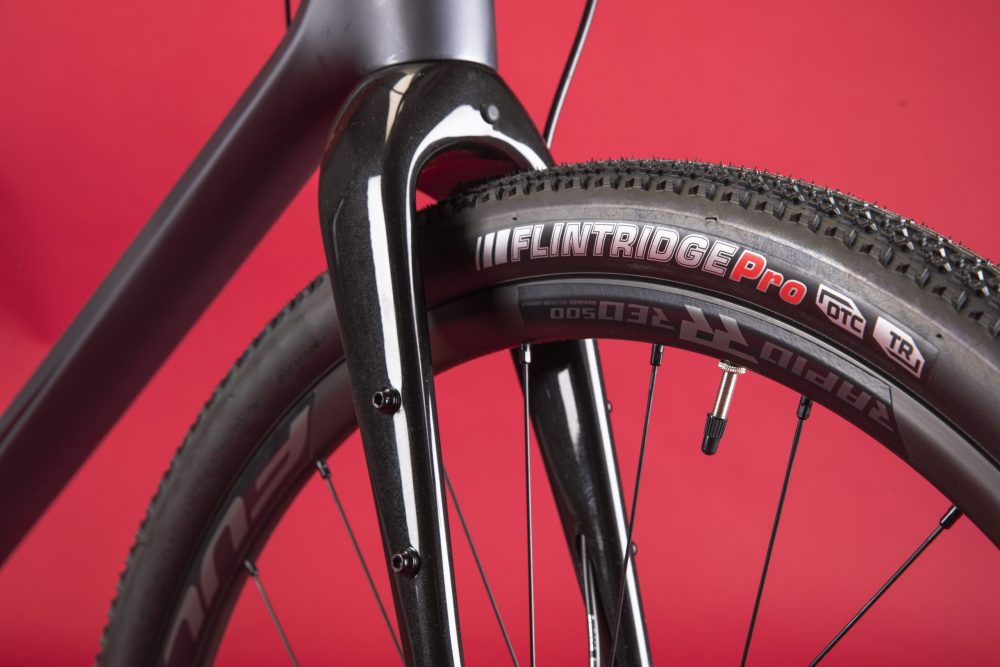
The handlebar is the final chink in the Silex+'s armour. It's just got too much reach. The shape in the most part is really good, a degree of backsweep keeps the wrists in a neutral position when on the tops whilst a shallow drop saves you from going too low - but the forward reach to the hoods is around 95mm. This stretches you out too much on really technical trails, and with an 80mm stem already fitted there's not much wriggle room to go shorter without impacting handling.
The rest of the kit is all without fault. The Merida Expert CC saddle with handy attached multitool is comfortable and works well off road.
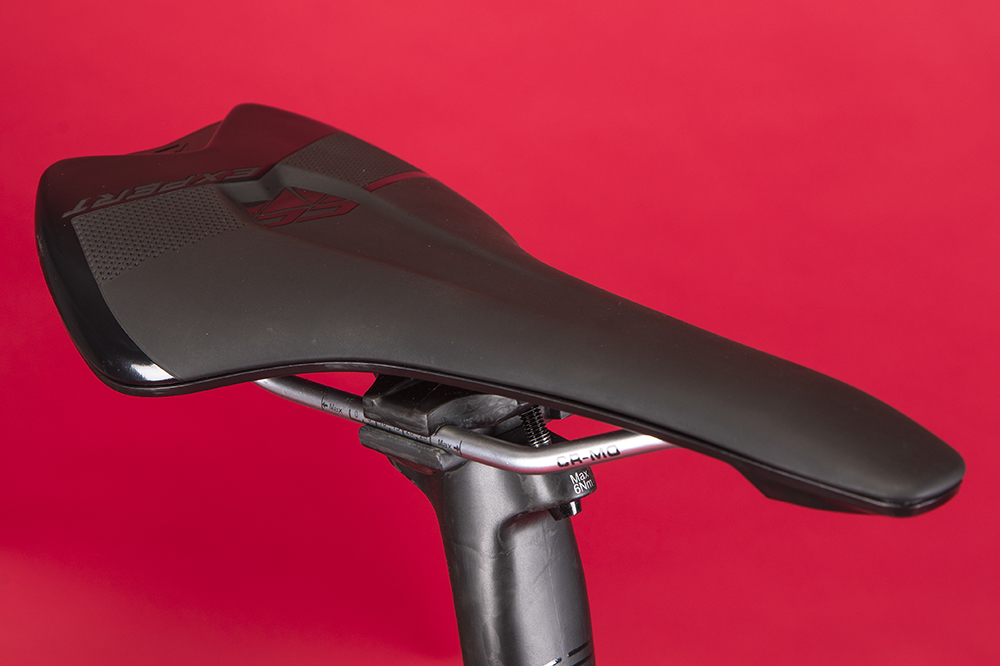
The ride
The Silex+ 8000-E is impressively capable when you want to blur the lines between riding smooth surfaced fire roads and skipping onto the sorts of trails most people would normally opt to ride a mountain bike on. In these situations you need a bike that will allow you to react to rapidly approaching obstacles but also deliver enough forgiveness through the wheels and frame that if you do inevitably hit a root square on it's not going to throw you into a bush or kill all momentum. In these situations the Silex+ 8000-E is a very good partner.
The frame and fork provide a delicious amount of feedback, enabling you to interpret tyre grip and weight distribution needs exceptionally well, whilst also managing to stifle all but the most vicious head-on hits.
However I can't quite get around the slightly odd riding position the frame shape and handlebar puts you in. It feels overly tall at the front end combined with a feeling of being a little too stretched out - kind of like adopting an upright version of Graeme Obree's 'superman'. I feel this bike needs a shorter reach to the hoods to really press home it's superlative trail mannerisms.
The smaller diameter 650b wheels brought to the mix a snappier degree of handling when negotiating twisty singletrack and a floatier ride over chattery surfaces thanks to the lower pressures and larger air volume the wider tyres bring to the mix. I did find that this degree of off-road prowess led to a performance limitation on tarmac - I needed to put in a little more effort to keep the Silex+ at usual road going speeds compared to an equivalent 700c. But as Merida itself gives you the choice at the point of purchase between 700c and 650b the question you have to ask yourself is what type of riding is your priority. For those looking to push the capabilities of gravel bike off-road then, with the proviso of a change of handlebar, the Silex+ 8000-E will be guaranteed to put a grin on your face.

Thank you for reading 20 articles this month* Join now for unlimited access
Enjoy your first month for just £1 / $1 / €1
*Read 5 free articles per month without a subscription

Join now for unlimited access
Try first month for just £1 / $1 / €1
Get The Leadout Newsletter
The latest race content, interviews, features, reviews and expert buying guides, direct to your inbox!
James Bracey's career has seen him move from geography teacher, to MBR writer, to Cycling Weekly's senior tech writer and video presenter. He possesses an in-depth knowledge of bicycle mechanics, as well as bike fit and coaching qualifications. Bracey enjoys all manner of cycling, from road to gravel and mountain biking.
-
 7-Eleven returns to the peloton for one day only at Liège-Bastogne-Liège
7-Eleven returns to the peloton for one day only at Liège-Bastogne-LiègeUno-X Mobility to rebrand as 7-Eleven for Sunday's Monument to pay tribute to iconic American team from the 1980s
By Tom Thewlis Published
-
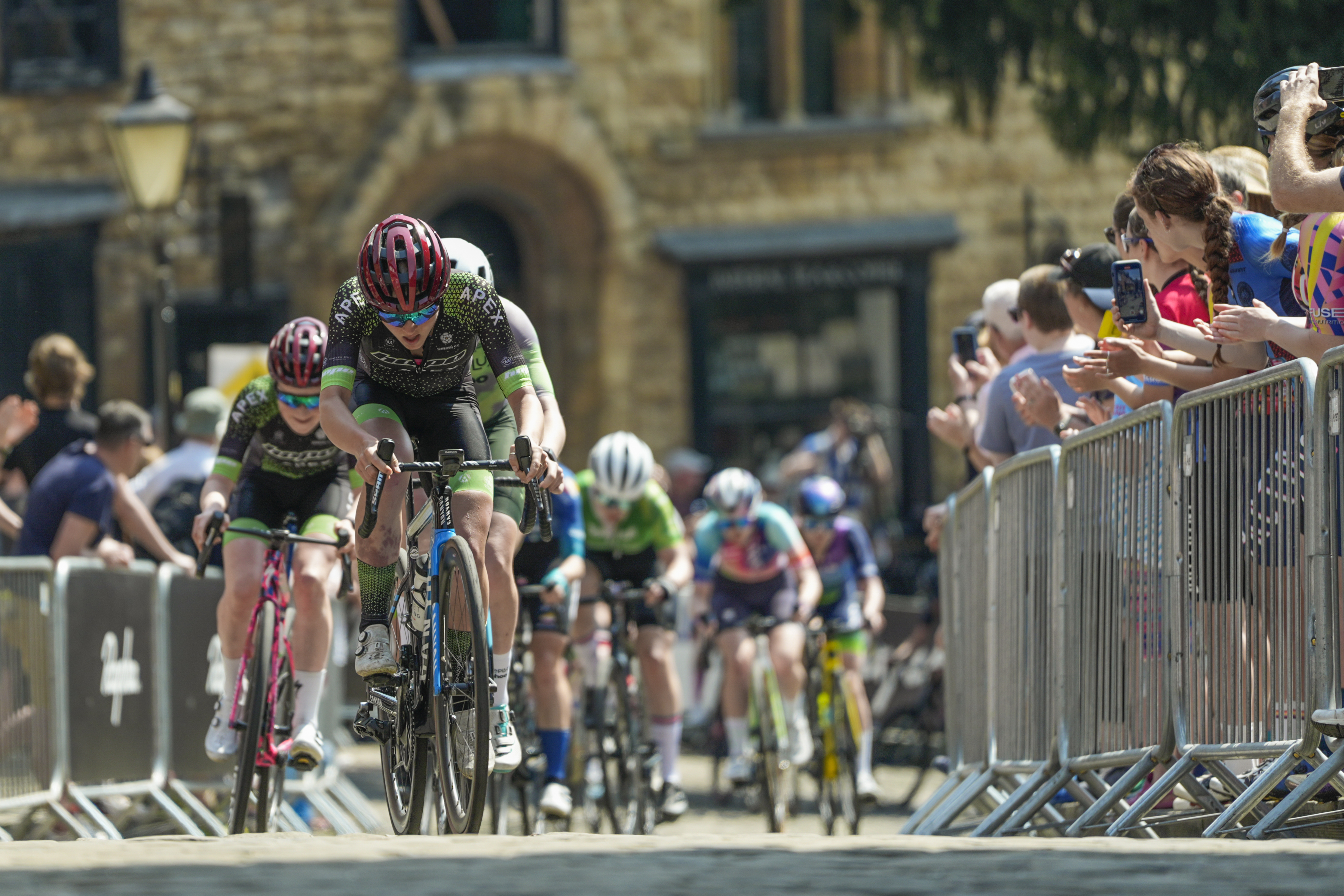 Rapha launches the Super-League, a new British road racing points competition
Rapha launches the Super-League, a new British road racing points competition16 events make up the Rapha Super-League, including crits and road races, with overall winners crowned
By Adam Becket Published
-
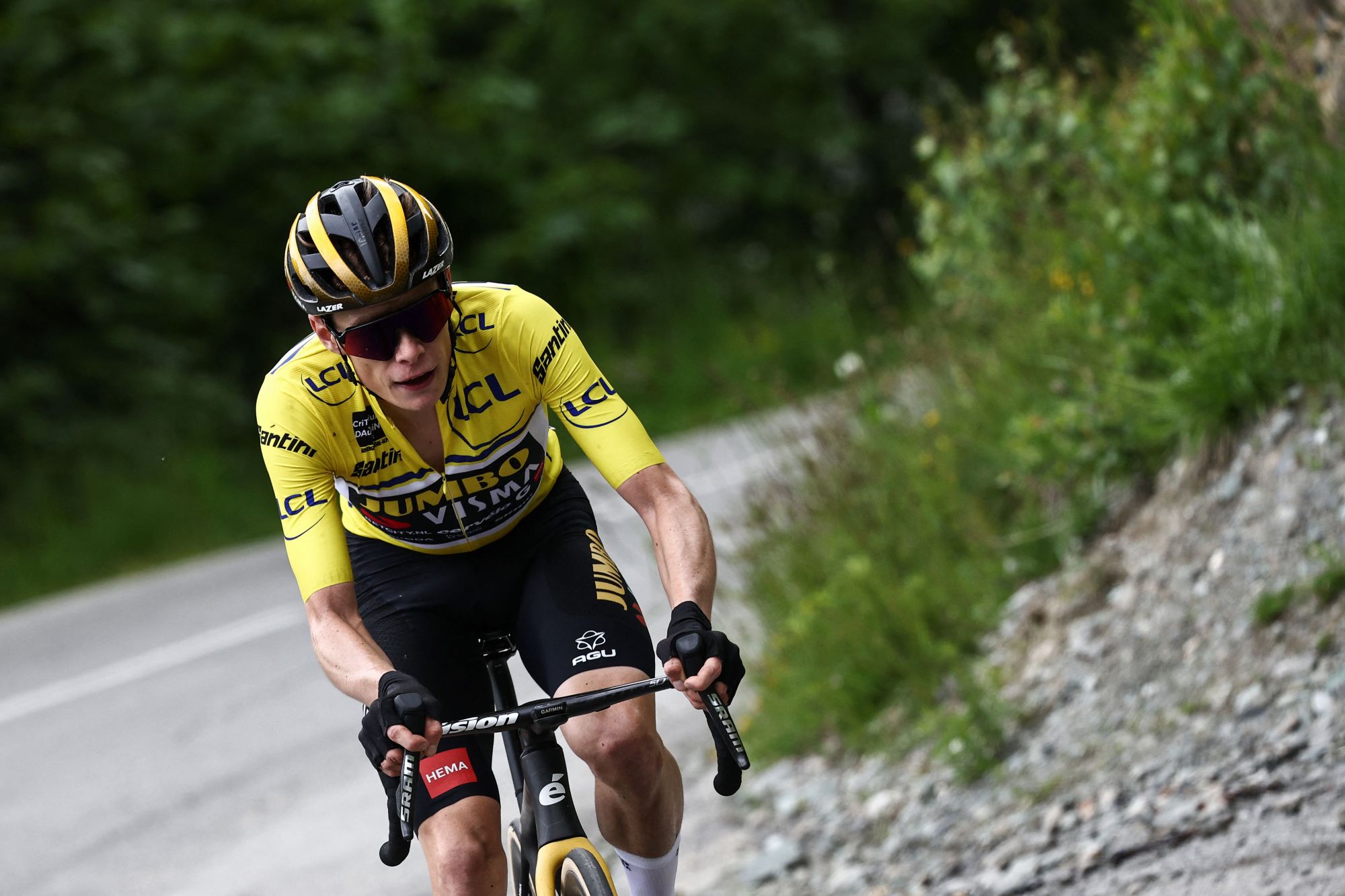 Jonas Vingegaard confirms race schedule ahead of Tour de France
Jonas Vingegaard confirms race schedule ahead of Tour de FranceDanish climber will only ride the Critérium du Dauphiné in June, but will take part in two altitude camps
By Tom Thewlis Published